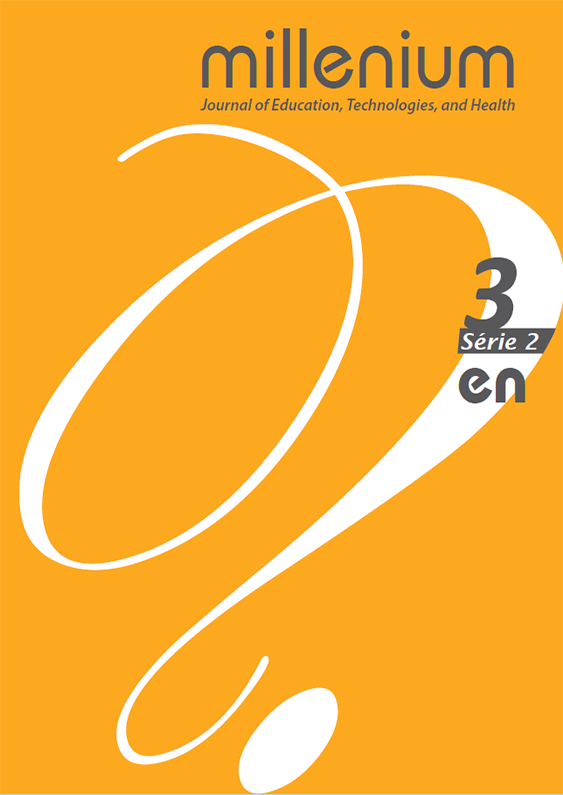Dementia Approach and Follow-up in Primary Care
DOI:
https://doi.org/10.29352/mill0203.04.00114Keywords:
Dementia, family physician, caregiverAbstract
Introduction: The prevalence of dementia has been increasing in recent years in parallel with an ageing population. Today it is a common pathology in primary care level.
Objectives: To review the family physician’s role in diagnosing and following up on patients with dementia.
Methods: Theoretical review based on researching clinical guidelines, systematic and original articles published in English and Portuguese in PubMed, Clinical Key, UpToDate, the Index of Portuguese Journals from January 2006 to September 2016 using the MeSH terms: “Dementia,” “Primary Health Care,” “Primary Care Nursing” and “Primary Care Physician.”
Results: When dementia is suspected, it is important to resort to family members and/or caregivers’ cooperation, to conduct a thorough medical history of the patient, focusing on behavioural and cognitive symptoms and changes in daily activities. Subsequently, an objective examination should be carried out and an array of cognitive, psycho-affective and functional assessment tests applied. Finally, an analytical and imaging evaluation should be performed. Equally important is the role of the family physician in the patient’s subsequent treatment/guidance and support to families and caregivers in care management.
Conclusions: The family physician is in a prime position for early detection of dementia. Clinical diagnosis is essential and is not always easy at an early stage. The role of doctors and other professionals in primary health care should not be limited to the initial assessment, but should extend to following up on and guiding the sick and their respective families.
Downloads
References
Alves, R., & Caetano, A. (2010). O papel do Médico de Família no diagnóstico e seguimento dos doentes com declínio cognitivo e demência. Rev Port Clin Geral, 26(1), 69-74.
American Psychiatric Association (2014). DSM-5: Manual de Diagnóstico e Estatística das Perturbações Mentais (5ª ed.). Lisboa: Climepsi.
Boustani, M., Schubert, C., & Sennour, Y. (2007). The challenge of supporting care for dementia in primary care. Clinical Interventions in Aging, 2(4), 631-636.
Darrow, M. D. (2015). A practical approach to dementia in the outpatient primary care setting. Prim Care Clin Office Pract, 42(2), 195-204. doi:10.1016/j.pop.2015.01.008
Dodd, E., Cheston, R., & Ivanecka, A. (2015). The assessment of dementia in primary care. Journal of Psychiatric and Mental Health Nursing, 22, 731-737.
Galvin, J. E., & Sadowsky, C. H. (2012). Practical guidelines for the recognition and diagnosis of dementia. J Am Board Fam Med, 25, 367-382. doi: 10.3122/jabfm.2012.03.100181
Holzer, S., Warner, J., & Iliffe, S. (2013). Diagnosis and management of the patient with suspected dementia in primary care. Drugs Aging, 30(9), 667-76. doi: 10.1007/s40266-013-0098-4
Larson, E.B. (2016). Evaluation of cognitive impairment and dementia. Obtido de www.uptodate.com
Norma da Direção Geral da Saúde, Nº 053/2011, Abordagem Terapêutica das Alterações Cognitivas. Obtido de https://www.dgs.pt/directrizes-da-dgs/normas-e-circulares-normativas/norma-n-0532011-de-27122011.aspx
Pinho, L. F. (2008). Demência: A marcha diagnóstica no âmbito dos Cuidados de Saúde Primários (Dissertação de Mestrado em Medicina). Faculdade de Ciências da Saúde da Universidade da Beira Interior, Covilhã.
Poggesi, A., & Pantoni, L. (2009). Investigations in primary care. Front Neurol Neurosc, 24, 66-78. doi: 10.1159/000197885
Pond, D. (2012). Dementia an update on management. Australian Family Physician, 41(12), 936-939.
Rodrigues, A. P., Sousa-Uva, M., Galvão, C., Nunes, B., & Dias, C. M. (2014). Prevalência de demências na população sob observação da Rede de Médicos-Sentinela em 2006. Boletim epidemiológico de observações, 3(10), 9-10.
Samsi, K., & Manthorpe, J. (2014). Care pathways for dementia: Current perspectives. Clinical Interventions in Aging, 9, 2055-2063.
Santana, I., Farinha, F., Freitas, S., Rodrigues, V., & Carvalho, A. (2015). Epidemiologia da demência e da doença de Alzheimer em Portugal: Estimativas da prevalência e dos encargos financeiros com a medicação. Acta Med Port, 28(2), 182-188.
Souza, L. C., Sarazin, M., Goetz, C., & Dubois, B. (2009). Clinical investigations in primary care. Front Neurol Neurosci, 24, 1-11. doi: 10.1159/000197897
Nunes, B., Silva, R. D., Cruz, V. T., Roriz, J. M., Pais, J., Silva, M. C. (2010). Research article Prevalence and pattern of cognitive impairment in rural and urban populations from Northern Portugal. BMC Neurology, 10(42), 1-12. doi: 10.1186/1471-2377-10-42
Downloads
Published
How to Cite
Issue
Section
License
Authors who submit proposals for this journal agree to the following terms:
a) Articles are published under the Licença Creative Commons (CC BY 4.0), in full open-access, without any cost or fees of any kind to the author or the reader;
b) The authors retain copyright and grant the journal right of first publication, allowing the free sharing of work, provided it is correctly attributed the authorship and initial publication in this journal;
c) The authors are permitted to take on additional contracts separately for non-exclusive distribution of the version of the work published in this journal (eg, post it to an institutional repository or as a book), with an acknowledgment of its initial publication in this journal;
d) Authors are permitted and encouraged to publish and distribute their work online (eg, in institutional repositories or on their website) as it can lead to productive exchanges, as well as increase the impact and citation of published work
Documents required for submission
Article template (Editable format)





